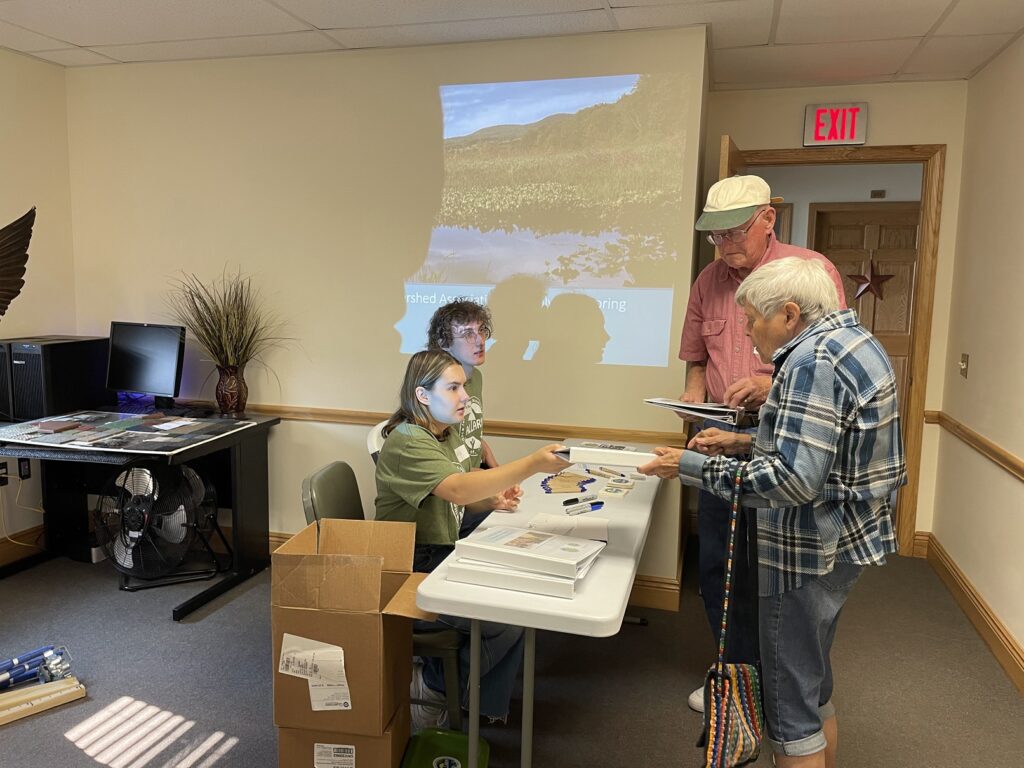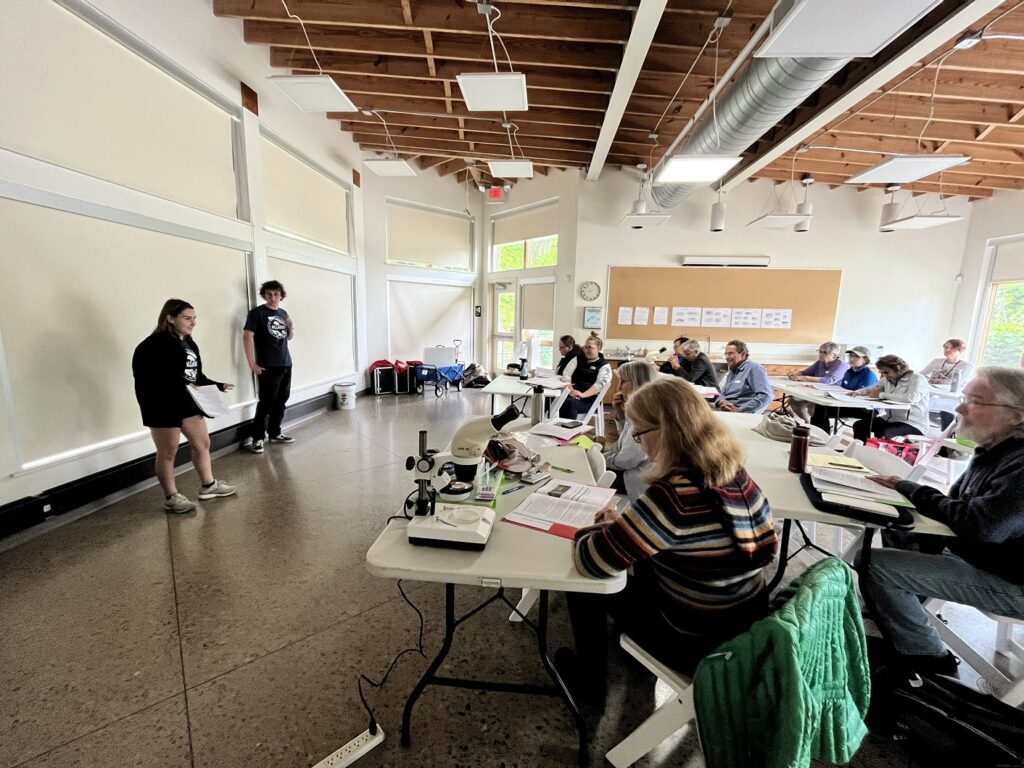My first week working at ALLARM over the summer was exciting and filled with adventures. On Wednesday, June 7th, members of the ALLARM staff headed across the state to Warren and Erie Counties for the Conewango Creek Watershed Association (CCWA)) monitoring information session and the Pennsylvania Lake Erie Watershed Association (PLEWA) macroinvertebrate training workshop. The purpose of these two meetings was to get volunteers oriented to who ALLARM is, and the different aspects of the monitoring process. Here is what we did for those busy, yet amazing two days!
At the CCWA monitoring information session, Stephanie Letourneau, Lindsay VanFossen, and Isabel Ruff presented information about ALLARM and the monitoring process as well as went over how to use certain equipment such as the pocket tester and turbidity tube. Our hope with the CCWA monitoring session was to gather interested community members together and give them all of the information they would need to feel comfortable with taking on monitoring in the future (with equipment trainings, of course!). It was amazing to see firsthand the passion individuals have when it comes to their community’s water bodies. After orientation, ALLARM was able to assign new sites thanks to Liz Drop, and we welcomed 5 new volunteers/volunteer groups!

The next day, June 8th, ALLARM traveled to Erie County to lead a macroinvertebrate training with PLEWA volunteers, where we met coordinators Joy Fronzoli and Dr. Sam Mason. Stephanie Letourneau led the macro overview as well as the general overview of the training. After this sit-down presentation prepping the volunteers with macro information, Crosby Wilkin ’26 and I spoke about field safety and acted out the macroinvertebrate collection and kick (macro shuffle) process so that volunteers knew what to expect when hopping into the water. My favorite part was being able to see the volunteers put their macro knowledge to the test. We went down to their local stream and put the collection and kick process to practice. Once the macros were collected, volunteers were given a dichotomous key to identify the macros, with added help from the ALLARM staff. It was fascinating to see how many volunteers were already skilled with their macroinvertebrate knowledge!
My experience attending both the CCWA information session, and the PLEWA macroinvertebrate training workshops helped me to better understand what ALLARM does. While working during the fall and spring semesters of the academic year, I am not able to fully delve into the ALLARM experience due to shortened hours. However, within my first week of working the ALLARM summer experience, I have been able to see many more aspects of what ALLARM does from planning to execution. I look forward to continuing my summer experience with ALLARM and hope to partake in more community events. After all, stream work makes the dream work!
